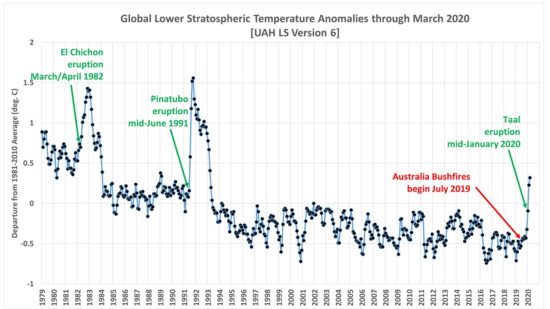Last month I noted how the global average lower stratospheric temperature had warmed considerably in recent months, especially in February, and tentatively attributed it to smoke from the Australian bushfires entering the lower stratosphere. You can read more there about my reasoning that the effect was unlikely to be due to the recent Taal volcanic eruption.
Here’s the March 2020 update, showing continued warming.

The effect cannot be as clearly seen in regional averages (e.g. tropics or Southern Hemisphere) because those regions routinely see large changes which are compensated for by changes of the opposite sign in other regions, due to strong adiabatic warming (sinking motion) or cooling (rising motion) in the statically stable stratosphere. Thus, global averages show the best signal of something new going on, even if that something new is only occurring in a specific region.

 Home/Blog
Home/Blog



